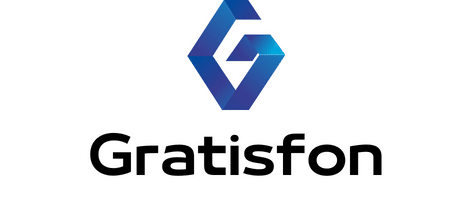What Are the Best Practices for Converting Brownfield Sites to Eco-Friendly Housing?

In the constantly evolving landscape of urban development, one of the most significant challenges we face is how to utilize previously developed, and now potentially contaminated, spaces known as brownfields. As you navigate the intricate world of urban redevelopment, it’s crucial to understand the strategies for transforming these underutilized sites into sustainable, eco-friendly housing. This article will explore the best practices for brownfield redevelopment, highlighting the environmental, economic, and community benefits this process can bring.
The Brownfield Challenge and Its Potential
Brownfield sites are defined as abandoned, idled, or underused industrial and commercial facilities where expansion or redevelopment is complicated by real or perceived environmental contamination. They can be found in almost any urban area, occupying valuable land that could be put to better use. The challenge lies in the fact that these areas often harbor various levels of environmental contamination, primarily in the soil, which needs to be remediated before any development can take place.
A lire en complément : How to Leverage Pop-Up Architecture in Temporary Real Estate Spaces?
However, with challenge comes opportunity. Redeveloping these sites not only eliminates potential environmental hazards but also offers a chance to bring much-needed housing to urban areas. Brownfield redevelopment is a viable option for creating sustainable, eco-friendly housing, turning an eyesore into a beneficial asset for the community.
Sustainable Remediation of Contaminated Soil
The first step in brownfield redevelopment is to conduct a thorough site assessment to determine the extent and nature of the contamination. This is followed by the remediation process, which involves cleaning up the contaminated soil to prepare it for redevelopment.
Lire également : How to Integrate Urban Farming Initiatives into Mixed-Use Developments?
As you embark on this journey, it’s crucial to implement sustainable remediation practices. This involves using techniques that minimize the environmental impact of the cleanup process, such as the use of green technologies for soil cleaning or the application of natural attenuation methods, where the environment’s natural processes are enhanced to clean up or contain the contamination.
Sustainable remediation not only ensures the soil is safe for future development but also minimizes the additional environmental impact of the cleanup process. It’s a win-win for both the environment and the future residents of the site.
Incorporating Green Building Principles into Redevelopment
Once the site has been remediated and is ready for development, it’s essential to incorporate green building principles into the design and construction of the new residences. This can involve a wide variety of practices, such as using energy-efficient materials and appliances, maximizing the use of natural light, employing water-saving techniques, and creating landscapes that enhance the site’s natural features and contribute to local biodiversity.
Incorporating green building principles not only contributes to the eco-friendliness of the housing but also makes them more energy-efficient, reducing the buildings’ impact on the environment and potentially saving residents money on energy bills.
Engaging the Community in the Redevelopment Process
Community engagement is a crucial part of brownfield redevelopment. By involving the community in the planning and development process, you can ensure that the new housing meets the needs of the local population and contributes positively to the surrounding area.
Community engagement can take many forms, from public meetings and consultations to partnerships with local organizations. It’s an opportunity to gather valuable feedback and ideas, build support for the project, and foster a sense of ownership and pride in the new development.
Remember, brownfield redevelopment isn’t just about cleaning up contaminated sites – it’s also about creating valuable community assets and improving people’s quality of life.
Harnessing Economic Benefits of Brownfield Redevelopment
Let’s not forget the economic potential of brownfield redevelopment. By transforming underutilized, potentially hazardous sites into attractive, sustainable housing, you’re not only improving the environment but also contributing to the economic vitality of the area.
Redeveloped brownfields can create jobs, increase property values, and stimulate local economies. When done right, brownfield redevelopment can be a powerful tool for economic development, providing a compelling example of how environmental sustainability and economic growth can go hand in hand.
Ultimately, the conversion of brownfields into eco-friendly housing can bring immense benefits to urban areas. By embracing sustainable remediation, green building principles, community engagement, and harnessing the economic potential of these sites, you can transform these former industrial areas into valuable assets that contribute to the health, sustainability, and vitality of our urban communities. There’s no denying that brownfield redevelopment represents a significant opportunity to reinvigorate our urban landscapes with sustainable, eco-friendly housing communities.
Fostering Affordable Housing and Infill Development
One powerful benefit of transforming brownfield sites into eco-friendly housing lies in the opportunity for affordable housing and infill development. Infill development refers to the practice of developing vacant or underused parcels within existing urban areas that are already largely developed. This type of development is key for creating more sustainable cities by making use of existing infrastructure like transit, schools, and utilities, thereby curbing urban sprawl.
Brownfield sites, by their very nature, are often located in urban areas that are well served by existing infrastructure. Therefore, they present a prime opportunity for infill development. As such, redeveloping these sites can help to increase the supply of housing in these areas, which can contribute to more affordable housing options.
Moreover, brownfield redevelopment projects can also contribute to a greener future by providing opportunities for renewable energy use. For example, housing developments on these sites can incorporate solar panels or other forms of renewable energy into their designs. By doing so, these projects not only contribute to mitigating climate change but also help residents save on energy costs.
In this way, brownfield redevelopment can contribute significantly to creating affordable housing options, promoting infill development, and fostering renewable energy use, thereby playing a key role in building a greener, more sustainable future.
Creating Green Spaces and Community Amenities
In addition to housing, brownfield redevelopment also offers the opportunity to create green spaces and community amenities. These not only enhance the site’s environmental sustainability but also contribute to the well-being and quality of life of the local community.
For instance, part of the redevelopment of a brownfield site could involve the creation of parks or other green spaces. These not only help to improve air and water quality and provide habitat for wildlife but also offer recreational opportunities for residents. Access to green spaces has been linked to numerous health benefits, including reduced stress levels and improved physical health.
Community amenities such as playgrounds, community centers, or shopping facilities can also be incorporated into the redevelopment plans. These can help to meet the needs and desires of the local population, making the new development a more attractive and livable place.
By incorporating green spaces and community amenities into redevelopment plans, you can ensure that the transformation of brownfield sites contributes to creating healthier, happier, and more sustainable communities.
Conclusion
Transforming brownfield sites into eco-friendly housing represents a powerful opportunity for sustainable urban development. Through this process, we can turn contaminated sites into valuable community assets – providing affordable housing, promoting infill development, fostering renewable energy use, creating green spaces, and offering community amenities.
In undertaking brownfield redevelopment projects, it’s crucial to prioritize sustainable remediation and green building principles, harness the potential economic benefits, and engage the community. Doing so will not only help us to build a greener future, but also improve the health, sustainability, and vitality of our urban communities. In this light, brownfield redevelopment is not merely a strategy for managing contaminated sites, but also a pathway towards a more sustainable and equitable future.
It’s time to embrace the opportunities that brownfield redevelopment offers and work towards creating vibrant, eco-friendly housing communities that benefit us all. Let’s forge ahead and build a better, greener world for future generations.
